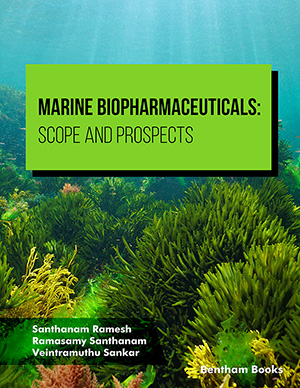Abstract
Introduction: The incidence of insulin resistance syndrome and type 2 diabetes mellitus has increased at an alarming rate worldwide and constitutes a serious challenge to public health care in the 21st century. Endocrine disrupting chemicals are defined as “substances or mixtures of substances that alter the endocrine system functions and, hence, adversely affect organisms, their progeny, or sub populations” and may be associated with this increase in prevalence.
Objective: This study aimed to assess the role of endocrine disrupting chemicals in insulin resistance and the importance of approaching the subject during anamnesis. Methods: A full review of the literature regarding insulin resistance, type-2 diabetes and endocrine disruptors were conducted. Conclusion: Large-scale production and distribution of endocrine disrupting chemicals coincide with the increase in the prevalence of insulin resistance globally. In recent years, studies have shown that endocrine disrupting chemicals are positively associated with insulin resistance syndrome, evidenced by worse prognoses among individuals with higher levels of exposure. Health professionals should recognize the forms of exposure, most susceptible people, and lifestyle habits that can worsen patients’ prognoses.Keywords: endocrine disruptors, insulin resistance, bisphenol A, obesity, environmental pollutants, anamnesis.
[http://dx.doi.org/10.1038/nrendo.2011.183] [PMID: 22064493]
[http://dx.doi.org/10.1289/ehp.1104597] [PMID: 22296744]
[http://dx.doi.org/10.1111/1753-0407.12325] [PMID: 26119400]
[http://dx.doi.org/10.1146/annurev-physiol-012110-142200] [PMID: 21054169]
[http://dx.doi.org/10.1016/j.mce.2012.01.001] [PMID: 22249005]
[http://dx.doi.org/10.1530/JME-12-0066]
[http://dx.doi.org/10.1016/j.etap.2015.06.009] [PMID: 26164742]
[http://dx.doi.org/10.1152/ajpendo.00233.2011] [PMID: 21673306]
[http://dx.doi.org/10.1210/er.2009-0002] [PMID: 19502515]
[http://dx.doi.org/10.1177/0960327112470273] [PMID: 23424204]
[http://dx.doi.org/10.3390/ijerph110403728] [PMID: 24705360]
[http://dx.doi.org/10.1016/j.reprotox.2013.07.017] [PMID: 23892310]
[http://dx.doi.org/10.1210/en.2014-1952] [PMID: 25830705]
[http://dx.doi.org/10.1111/ijpo.12154] [PMID: 27187765]
[http://dx.doi.org/10.1371/journal.pone.0065399] [PMID: 23776476]
[http://dx.doi.org/10.1007/s00592-013-0472-z] [PMID: 23636267]
[http://dx.doi.org/10.1210/jc.2011-1682]
[http://dx.doi.org/10.1186/s12905-017-0398-7] [PMID: 28637458]
[http://dx.doi.org/10.1289/ehp.1103998] [PMID: 22169271]
[http://dx.doi.org/10.1177/0960327113506238] [PMID: 24130215]
[http://dx.doi.org/10.1016/j.envint.2017.09.002] [PMID: 28938100]
[http://dx.doi.org/10.3390/ijerph14121456] [PMID: 29186834]
[http://dx.doi.org/10.1016/j.scitotenv.2017.01.193] [PMID: 28174045]
[http://dx.doi.org/10.1016/j.scitotenv.2017.09.009] [PMID: 28898934]
[http://dx.doi.org/10.1210/jc.2018-01797] [PMID: 30462244]
[http://dx.doi.org/10.1007/s11356-019-04373-1] [PMID: 30734259]
[http://dx.doi.org/10.3390/ijerph13030270] [PMID: 26938545]
[http://dx.doi.org/10.1016/j.envint.2011.05.008] [PMID: 21683445]
[http://dx.doi.org/10.1016/j.chemosphere.2012.03.087] [PMID: 22579452]
[http://dx.doi.org/10.1289/ehp.0901321] [PMID: 20064776]
[http://dx.doi.org/10.1016/j.etap.2015.07.008] [PMID: 26233560]
[http://dx.doi.org/10.1210/en.2014-1668] [PMID: 25535829]
[http://dx.doi.org/10.1093/aje/kwu212] [PMID: 25255811]
[http://dx.doi.org/10.1289/EHP147] [PMID: 27266903]
[http://dx.doi.org/10.1371/journal.pone.0015977] [PMID: 21298090]
[http://dx.doi.org/10.1016/j.envres.2014.11.001] [PMID: 25706918]
[http://dx.doi.org/10.3961/jpmph.2012.45.2.62] [PMID: 22509446]
[http://dx.doi.org/10.1210/jc.2012-1342]
[http://dx.doi.org/10.1016/j.diabet.2013.01.006] [PMID: 23639570]
[http://dx.doi.org/10.1289/ehp.1205248] [PMID: 23131992]
[PMID: 11192656]
[http://dx.doi.org/10.1111/j.1365-2605.2009.01035.x] [PMID: 20113374]
[http://dx.doi.org/10.1093/icb/45.2.321] [PMID: 21676775]
[http://dx.doi.org/10.1289/ehp.11933] [PMID: 19270804]
[http://dx.doi.org/10.1080/10937409809524541] [PMID: 9487091]
[http://dx.doi.org/10.1377/hlthaff.2010.1225] [PMID: 21555467]
[http://dx.doi.org/10.1016/j.ajog.2016.01.182] [PMID: 26829510]
[http://dx.doi.org/10.1002/etc.85] [PMID: 20821477]
[PMID: 10943450]
[http://dx.doi.org/10.1016/j.tox.2004.06.032] [PMID: 15458784]
[http://dx.doi.org/10.1016/j.crvi.2017.07.004] [PMID: 29126512]
[PMID: 25247795]
[http://dx.doi.org/10.1155/2012/713696] [PMID: 22991565]
[http://dx.doi.org/10.1097/MED.0b013e32830ce95c] [PMID: 18769210]
[http://dx.doi.org/10.1007/s11077-005-1764-0]
[http://dx.doi.org/10.1590/S0102-311X2002000200016] [PMID: 11923893]
[http://dx.doi.org/10.1289/ehp.02110427] [PMID: 11940462]
[http://dx.doi.org/10.1289/ehp.5686]
[http://dx.doi.org/10.1146/annurev-publhealth-031811-124556] [PMID: 23514318]
[http://dx.doi.org/10.1038/nrendo.2010.87] [PMID: 20498677]
[http://dx.doi.org/10.1093/toxsci/kfg255] [PMID: 14677558]
[http://dx.doi.org/10.1111/j.1365-2605.2007.00858.x] [PMID: 18315718]
[http://dx.doi.org/10.1038/nrendo.2015.163] [PMID: 26391979]
[http://dx.doi.org/10.1071/R98051] [PMID: 9727600]
[http://dx.doi.org/10.1289/ehp.1306695]
[http://dx.doi.org/10.3390/ijms140816732] [PMID: 23949635]
[http://dx.doi.org/10.3390/ijerph14101282] [PMID: 29064461]
[http://dx.doi.org/10.3390/ijerph110707001] [PMID: 25014249]
[http://dx.doi.org/10.14310/horm.2002.1271] [PMID: 20688618]
[http://dx.doi.org/10.1111/j.1741-4520.2002.tb00857.x] [PMID: 12196705]
[http://dx.doi.org/10.1016/j.tem.2009.03.009] [PMID: 19709900]
[http://dx.doi.org/10.1210/en.2012-1422] [PMID: 22733974]
[http://dx.doi.org/10.1001/archpediatrics.2012.241] [PMID: 23367522]
[http://dx.doi.org/10.1016/j.brainresbull.2004.11.015] [PMID: 15811586]
[http://dx.doi.org/10.1038/nrendo.2011.56] [PMID: 21467970]
[http://dx.doi.org/10.2105/AJPH.91.9.1358] [PMID: 11527755]
[http://dx.doi.org/10.2105/AJPH.91.9.1351] [PMID: 11527753]
[http://dx.doi.org/10.1136/oem.2006.030601]
[http://dx.doi.org/10.1111/j.1525-1446.2008.00703.x] [PMID: 18477377]
[http://dx.doi.org/10.1038/nbt1102-1075] [PMID: 12410243]
[http://dx.doi.org/10.1146/annurev.publhealth.25.050503.153941] [PMID: 15015918]
[http://dx.doi.org/10.1289/ehp.7538] [PMID: 15811829]
[http://dx.doi.org/10.4337/9781847201676]
[http://dx.doi.org/10.1016/S0033-3549(04)50167-X] [PMID: 12477912]
[http://dx.doi.org/10.2166/wh.2008.036] [PMID: 18401124]
[http://dx.doi.org/10.1128/CMR.18.1.195-204.2005] [PMID: 15653826]
[http://dx.doi.org/10.1016/j.ijantimicag.2007.02.018] [PMID: 17467959]
[http://dx.doi.org/10.1016/j.eiar.2004.06.003]
[http://dx.doi.org/10.1289/ehp.01109871] [PMID: 11673114]
[http://dx.doi.org/10.1080/1943815X.2010.511648]
[http://dx.doi.org/10.1046/j.1472-765X.1999.00656.x] [PMID: 10664978]
[http://dx.doi.org/10.1007/BF02368389]
[http://dx.doi.org/10.4337/9781847201676]
[http://dx.doi.org/10.1163/19426720-01104007]
[PMID: 15212219]
[http://dx.doi.org/10.1080/10807030590919873]
[PMID: 15212209]
[http://dx.doi.org/10.1111/1468-5965.00345]
[http://dx.doi.org/10.4337/9781847201676.00011]
[http://dx.doi.org/10.1179/oeh.2000.6.4.281] [PMID: 11114121]
[http://dx.doi.org/10.1016/j.ijheh.2007.07.017] [PMID: 17889608]
[http://dx.doi.org/10.1016/S0033-3549(04)50202-9] [PMID: 12576537]
[http://dx.doi.org/10.1080/03605310490500509] [PMID: 15512973]
[http://dx.doi.org/10.1289/ehp.5438] [PMID: 12515688]
[http://dx.doi.org/10.1007/BF03404860] [PMID: 21214055]
[http://dx.doi.org/10.1177/000271620258400104]
[http://dx.doi.org/10.1001/jama.291.23.2847] [PMID: 15199035]
[PMID: 22011600]
[http://dx.doi.org/10.3945/ajcn.2010.29786] [PMID: 20861173]
[http://dx.doi.org/10.1038/sj.ijo.0802914] [PMID: 15768043]
[http://dx.doi.org/10.1001/jama.2012.40] [PMID: 22253364]
[http://dx.doi.org/10.1056/NEJMoa012578] [PMID: 11893791]
[http://dx.doi.org/10.1038/sj.ijo.0802797] [PMID: 15543227]
[http://dx.doi.org/10.2337/db11-0153] [PMID: 21709279]
[http://dx.doi.org/10.1007/s00134-015-4159-5] [PMID: 26667027]
[http://dx.doi.org/10.1016/j.toxlet.2014.04.012] [PMID: 24793715]
[http://dx.doi.org/10.1016/j.toxlet.2014.09.025] [PMID: 25280772]
[http://dx.doi.org/10.1038/nrendo.2012.205] [PMID: 23147575]
[http://dx.doi.org/10.1038/nrendo.2017.42] [PMID: 28524171]
[http://dx.doi.org/10.1530/JOE-14-0356] [PMID: 25112833]
[http://dx.doi.org/10.3390/ijerph14090959]
[http://dx.doi.org/10.1016/S2213-8587(16)30275-3] [PMID: 27765541]
[http://dx.doi.org/10.1210/jc.2014-4324] [PMID: 25742516]
[http://dx.doi.org/10.1159/000358913] [PMID: 24503497]





























